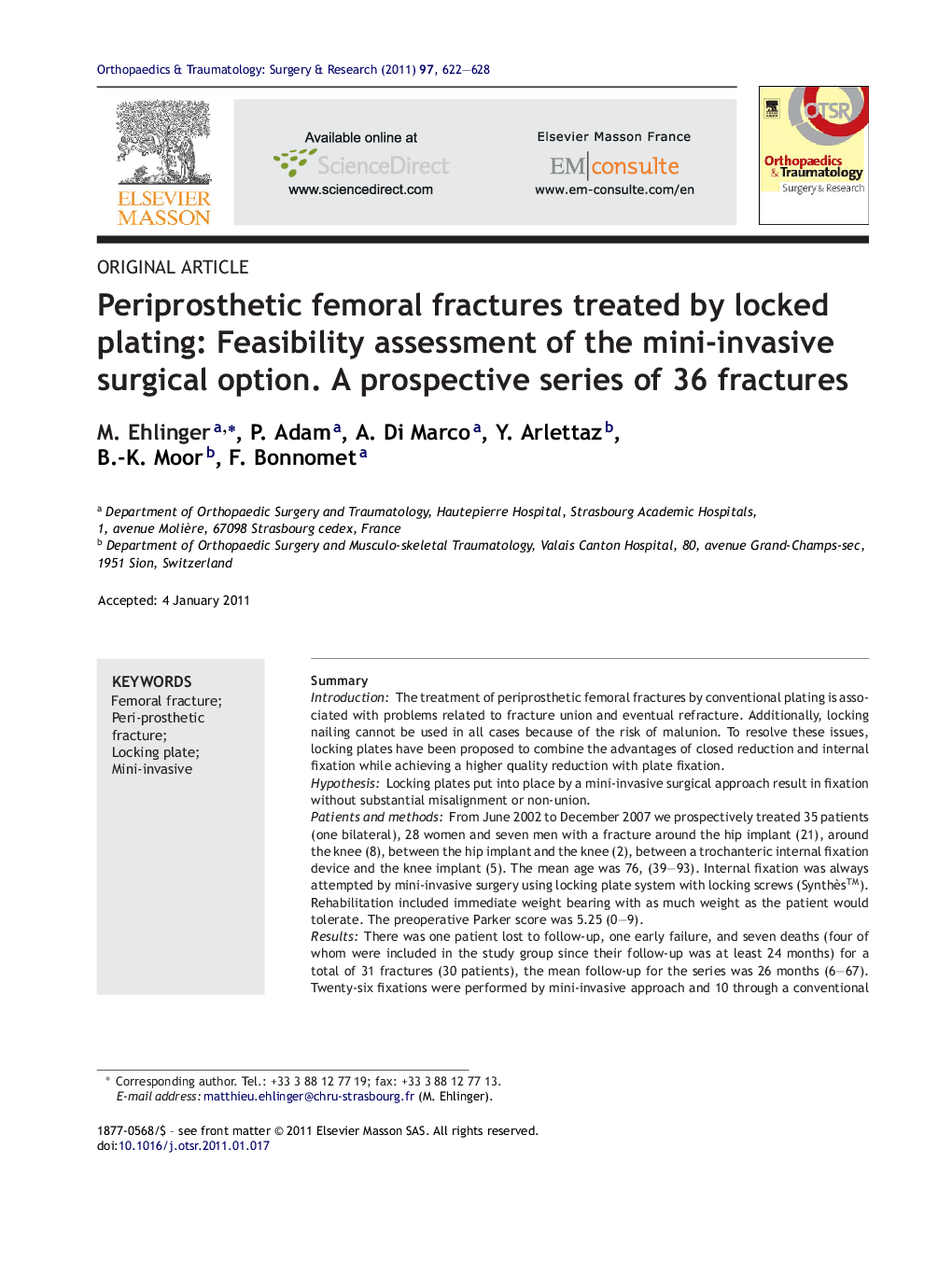| کد مقاله | کد نشریه | سال انتشار | مقاله انگلیسی | نسخه تمام متن |
|---|---|---|---|---|
| 4081909 | 1267614 | 2011 | 7 صفحه PDF | دانلود رایگان |

SummaryIntroductionThe treatment of periprosthetic femoral fractures by conventional plating is associated with problems related to fracture union and eventual refracture. Additionally, locking nailing cannot be used in all cases because of the risk of malunion. To resolve these issues, locking plates have been proposed to combine the advantages of closed reduction and internal fixation while achieving a higher quality reduction with plate fixation.HypothesisLocking plates put into place by a mini-invasive surgical approach result in fixation without substantial misalignment or non-union.Patients and methodsFrom June 2002 to December 2007 we prospectively treated 35 patients (one bilateral), 28 women and seven men with a fracture around the hip implant (21), around the knee (8), between the hip implant and the knee (2), between a trochanteric internal fixation device and the knee implant (5). The mean age was 76, (39–93). Internal fixation was always attempted by mini-invasive surgery using locking plate system with locking screws (Synthès™). Rehabilitation included immediate weight bearing with as much weight as the patient would tolerate. The preoperative Parker score was 5.25 (0–9).ResultsThere was one patient lost to follow-up, one early failure, and seven deaths (four of whom were included in the study group since their follow-up was at least 24 months) for a total of 31 fractures (30 patients), the mean follow-up for the series was 26 months (6–67). Twenty-six fixations were performed by mini-invasive approach and 10 through a conventional open surgery. Patients applied full weight (n = 20), partial weight (n = 3) or no weight for 6 weeks (n = 13). Infections developed in two patients and there were three cases of mechanical failure. Fracture union was achieved in 35 out of 36 cases. More than 5° of misalignment was observed in five patients. Loosening of the implant did not occur in any patients during follow-up. The Parker score in patients seen at follow up was 4.3 (0–9).Discussion-conclusionLocking compression plates associated with a mini-invasive surgical approach result in a high rate of union (35/36) with no significant misalignment (only 5/36 cases of misalignment of more than 5°), no refractures (n = 0) and a low rate of mechanical failure (3/36) while allowing full weight bearing in most cases (20/36). Locking plates for periprosthetic femoral fractures allow patients to begin walking again, with stable intermediate term results.Level of scientific evidenceLevel IV. Prospective study with no control group.
Journal: Orthopaedics & Traumatology: Surgery & Research - Volume 97, Issue 6, October 2011, Pages 622–628